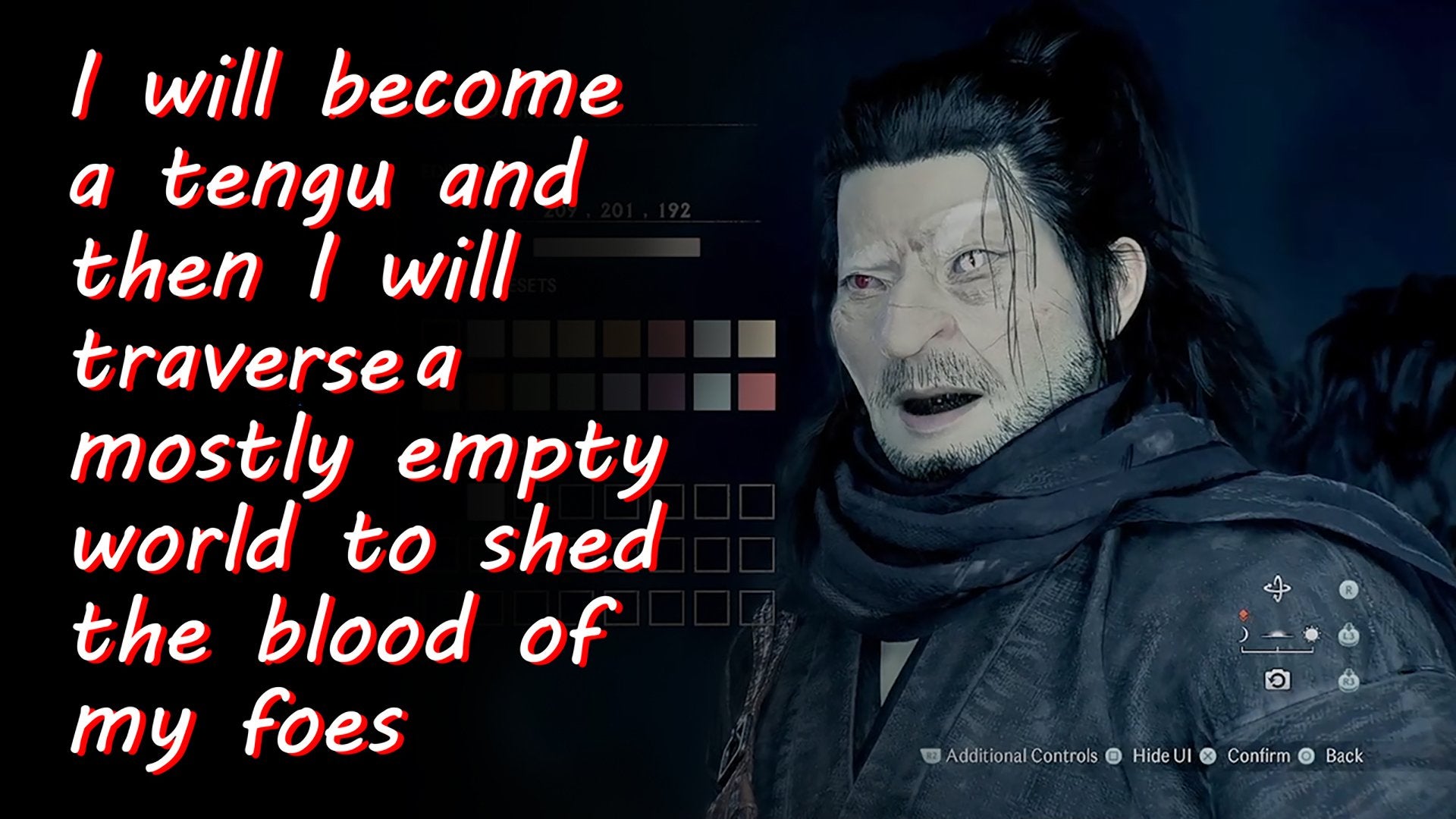



Pros
- Fighting is Fun
- Game runs very well
- Meiji period Japan is a nice place to explore
- Character customization lets you do what you want
Cons
- Combat doesn't innovate enough to stand out
- Visuals and audio are not spectacular
- Story is bland
- Characters are forgettable
- Multiplayer is generic
To review a game like Rise of the Ronin, it’s impossible not to compare it to other action-adventure games set in Japan. While fun, we’ve found that the game is lacking in enough areas that you should wait until it goes on sale to buy it. We’ll explain why.
Table Of Contents
Rise of the Ronin Review Video
Gameplay: Fighting Is Fun, but Not Unique
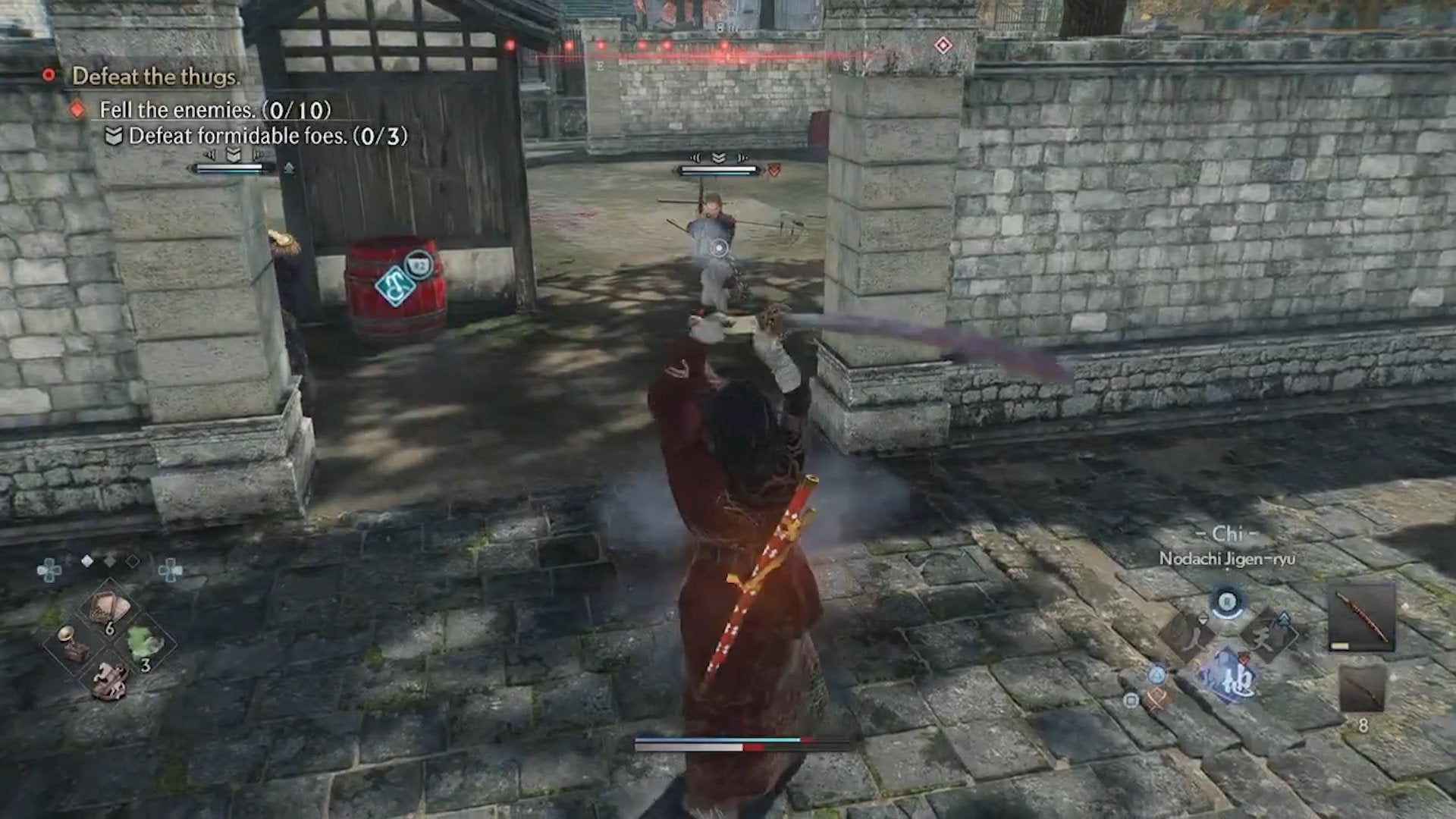
Despite having genre predecessors like Nioh (2017), Nioh 2 (2020), and Ghost of Tsushima (2020), Rise of the Ronin fails to innovate in a way that makes it stand out. The combat is solid, but generic. It feels a bit like the fighting in Nioh and Nioh 2 but without the factors that make those games unique.
There are stance changes, but the standard attacks remain the same. Different weapons exist, but many of them are just other types of swords with similar movesets. You can interrupt enemies’ attacks—but not always, so when to do so is not clear enough to be worth trying.
Furthermore, the potential for combos and stringing together attacks begins and ends at the standard attack combo (mashing the Square button a few times). It’s not like in Ghost of Tsushima where you can seamlessly transition between stances while attacking. There’s no fluidity to the combat in Rise of the Ronin. You block and then attack but dodge when an enemy uses an unblockable attack that’s heavily telegraphed. Rinse and repeat.
The ranged weapons, buffs, stealth, and terrain traversal are all run-of-the-mill. That’s not necessarily a bad thing, as these combat components have been standardized heavily across all action-adventure open world games—it’s what people expect and want (for the most part).
The combat is not groundbreaking by any means, but we still had a good time cutting our enemies down! However, even at the most challenging points, the game was still easy. When you’re low on health and outnumbered, you can simply move out of the enemies’ aggro range, let your health regenerate, and then enter the fray once more against foes still weakened from the previous skirmish. This broke our immersion often.
Graphics: Beautiful
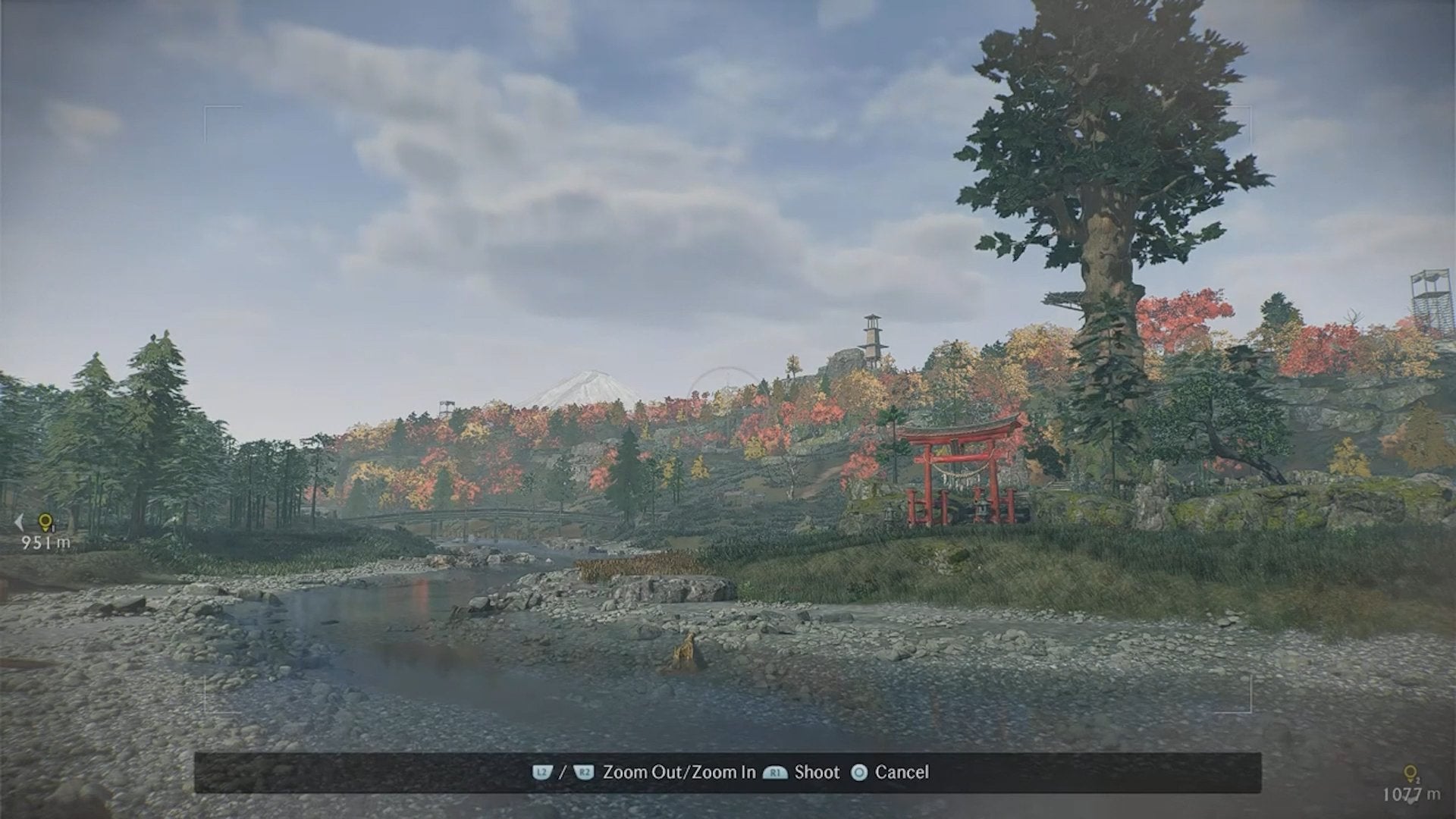
While running by cherry blossom trees in full bloom, we can appreciate the depiction of nature. However, the near-constant fog hanging in the air or the frequent rainfalls can sometimes dampen the visuals. Either way, it looks like the color palettes were chosen with care.
The design of the buildings, characters, animals, weapons, and armor are all solid. Nothing looked out of place for the Meiji period—which is the era in which Rise of the Ronin is set. All of the models were well-defined and lacked errors or weird glitches.
There’s a mechanic where you’re asked to take photographs of various landmarks and picturesque locations. You can use the Photo Mode in the settings menu to take splendid screenshots, but you can’t use those in-game for the photograph side quests. We think that there was a missed opportunity to combine both of these image-capturing features. With that said, photo modes are always a plus for us.
Sound: Satisfying Effects but Generic Score
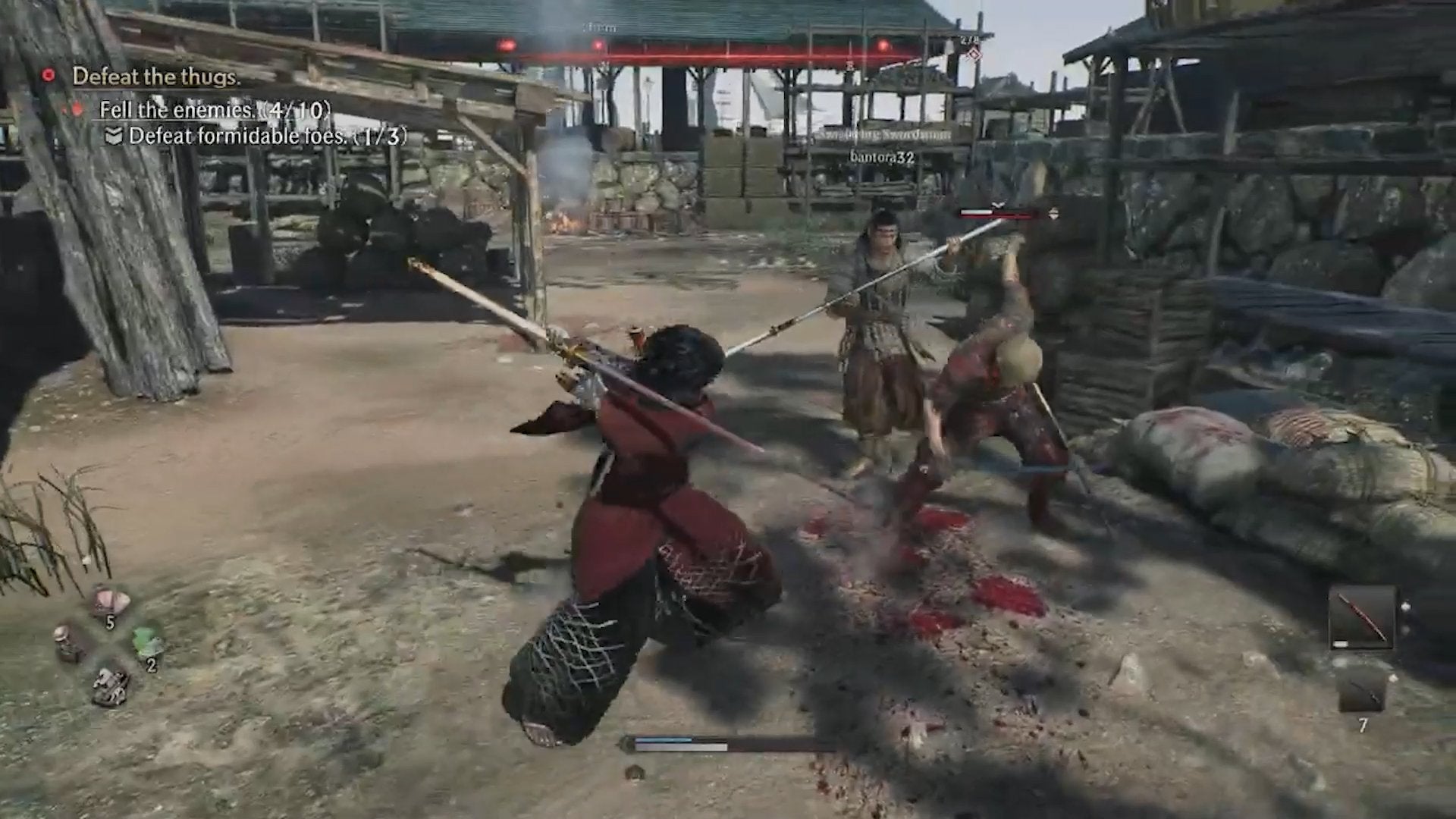
Here’s yet another area where Rise of the Ronin is middling in our review. The music and nature ambiance sound appropriate for the period and environment. Unfortunately, the combat music—the tunes that are supposed to get you hyped for battle—sound like they were ripped out of a low-tier samurai movie.
There’s nothing unique and—frankly—we found ourselves mentally swapping in music from other games after play sessions. When taking breaks during our 15-hour binge of gameplay, we could not for the life of us remember any melodies mere moments after putting our PS5 into rest mode.
Thankfully, the sound effects were all satisfying. The clanging of steel-on-steel when blocking was hardy. Slicing through flesh emitted visceral splashes of blood. The screams of our dying foes rallied our blade and made us thirst for more foes to vanquish.
Story: Forced Importance of Concepts
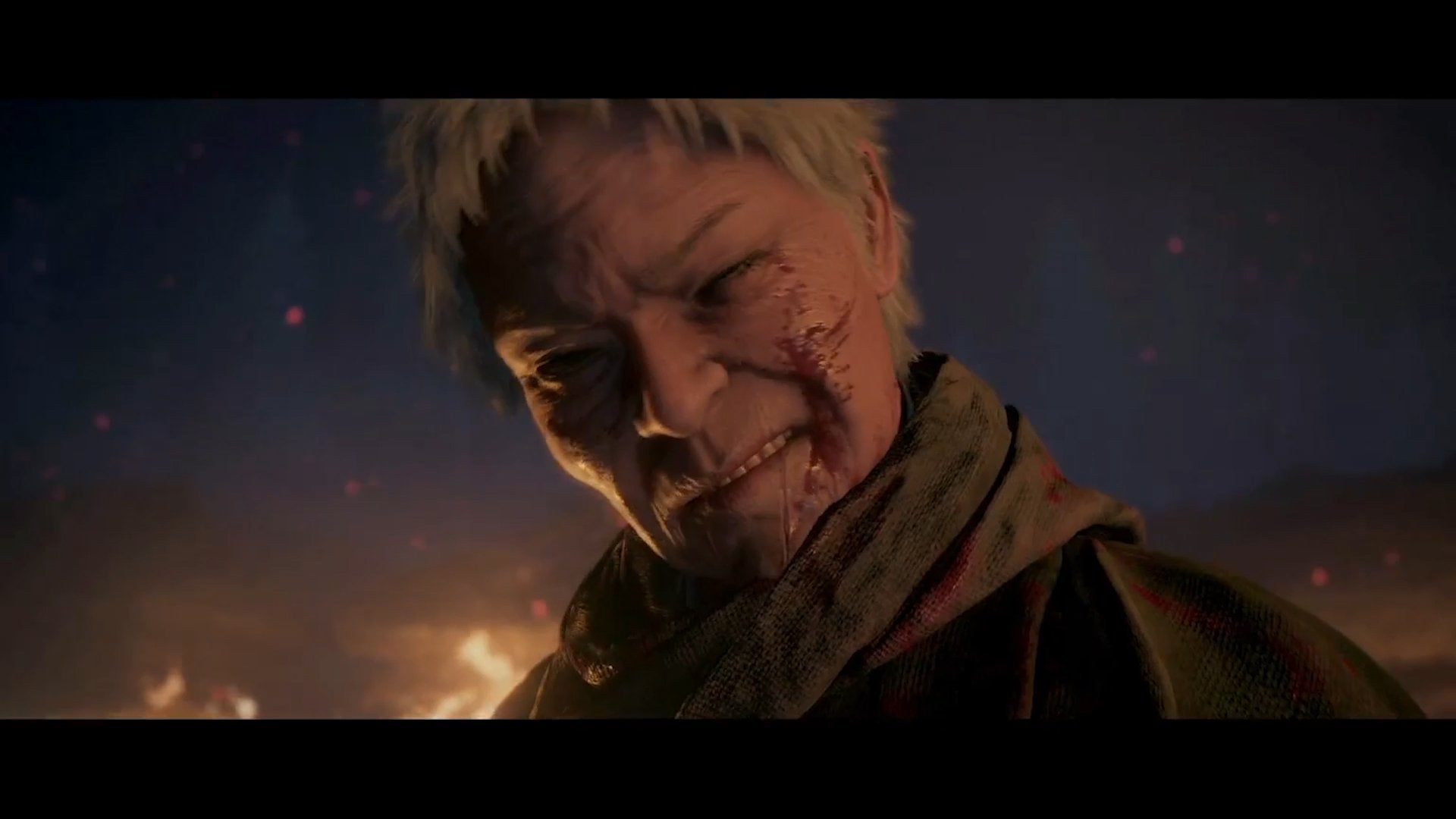
Immediately upon starting the game, you’re told that certain characters and concepts are important. Yet, in what we’re determining as the prologue to the actual game, a lot of the “important” characters are dismissed in one way or another very shortly after they’re introduced. The story of Rise of the Ronin is guilty of telling players how to feel without giving them genuine reasons to care.
There are no build-ups to deaths that should be dramatic. Turning points in the plot feel lackluster thanks to little to no development in themes. Worse yet, everything in the storyline feels like it was borrowed from other games, movies, and TV shows. Heavily-used tropes are there to tick boxes but fail to be original.
Performance: No Significant Issues in 15 Hours of Gameplay
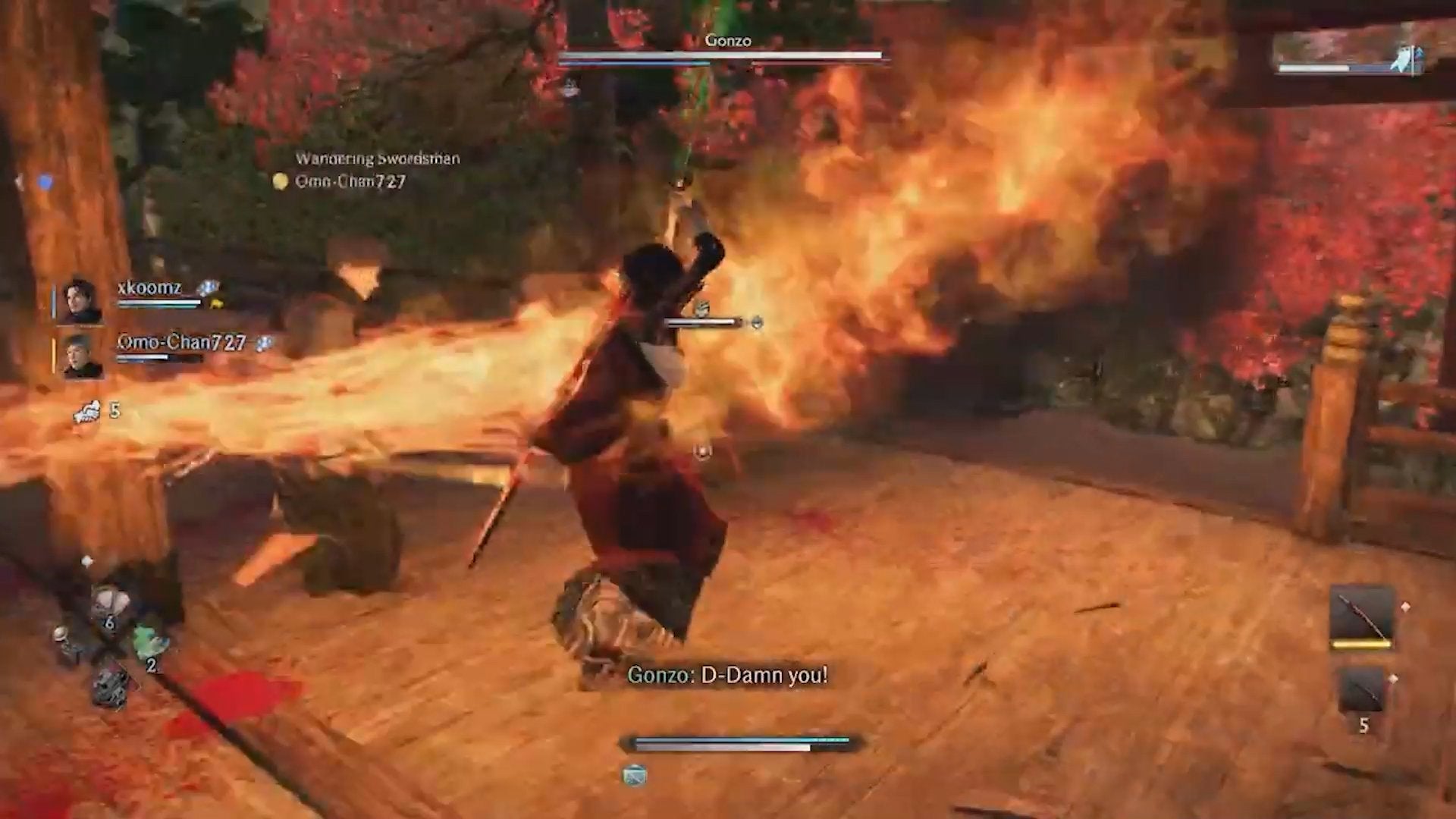
Besides one untextured section of grass between a building and a wall in Honmoku, we could not find any genuine technical issues in 15 hours of gameplay. Rise of the Ronin—upon review—is built well and handles many objects and actors on the screen at once without any jank. The physics engine is solid and makes excellent use of the PS5’s robust hardware. The only exception to this is the boar enemies that attack entirely too fast.
We did our best to load up our screen with as many particle effects as possible. We sprayed fire from the in-game flamethrower, used the poison weapon buffs to make our odachi glow green, and peppered foes with a hailstorm of bullets, arrows, and shuriken—the game never stuttered once. Rise of the Ronin is well-optimized and plays like it should for a game released in 2024. If only other titles had this much time and care put into them before release. We’re looking at you, Cyberpunk 2077!
Conversely, there’s a weird saving and loading discrepancy. Whenever we load our game, we get a message saying that save data cannot be found. Regardless of this, we can load the game just fine in most cases. On occasion, we lose about a minute of progress, which is not ideal. Thankfully, it doesn’t get any worse—save early and save often! Furthermore, the auto-save usually does a decent job of retaining your progress.
Characters: As Forgettable as They Come
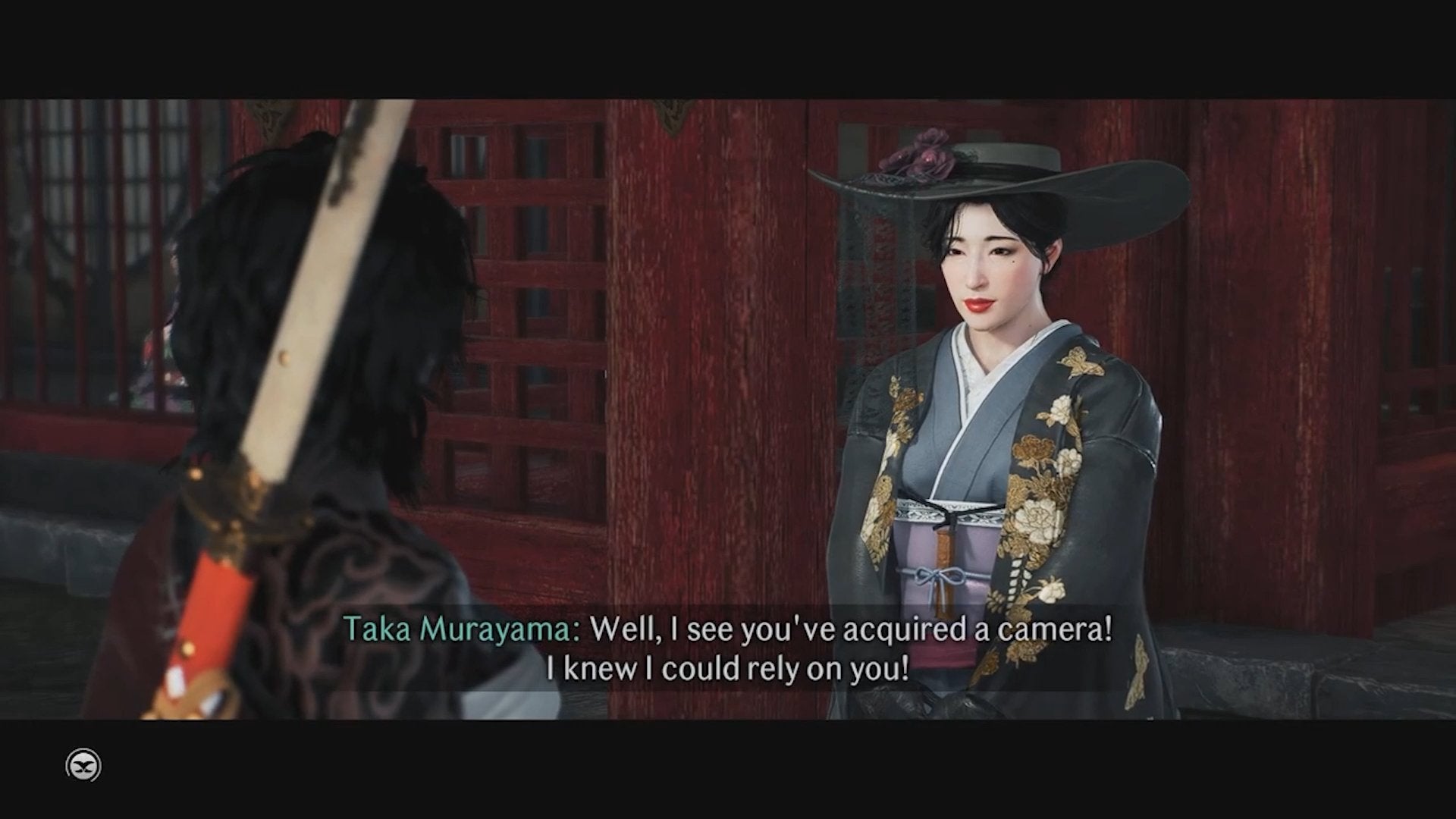
Outside of what an NPC can do for you, you won’t care much about them. A review of the characters in Rise of the Ronin reveals that they are merely pixels that give you goods or upgrades. It’s not for a lack of trying; the dialogue isn’t awful and the facial animations look great. However, there’s no engaging reason to spend time with NPCs other than to use them as living tools to see your ends met.
There are no character flaws that make the side characters relatable. They don’t act like people; they might as well be cardboard cutouts. While the motivations of a few characters are addressed, it always boils down to “Oh, they give me (insert thing).”
There are even developed conversation and relationship mechanics in the hub that you unlock after a few hours into the game. However, when you sit down for a chat, characters basically repeat the thematic notes about themselves that were already introduced in the side and main quests. Then, when you bond with the characters, you get some in-game benefits—though this cheapens the relationship and makes every connection feel transactional. You’ll only use these side characters; you won’t care about their goals and motives.
Setting: Meiji Japan Is Lovely
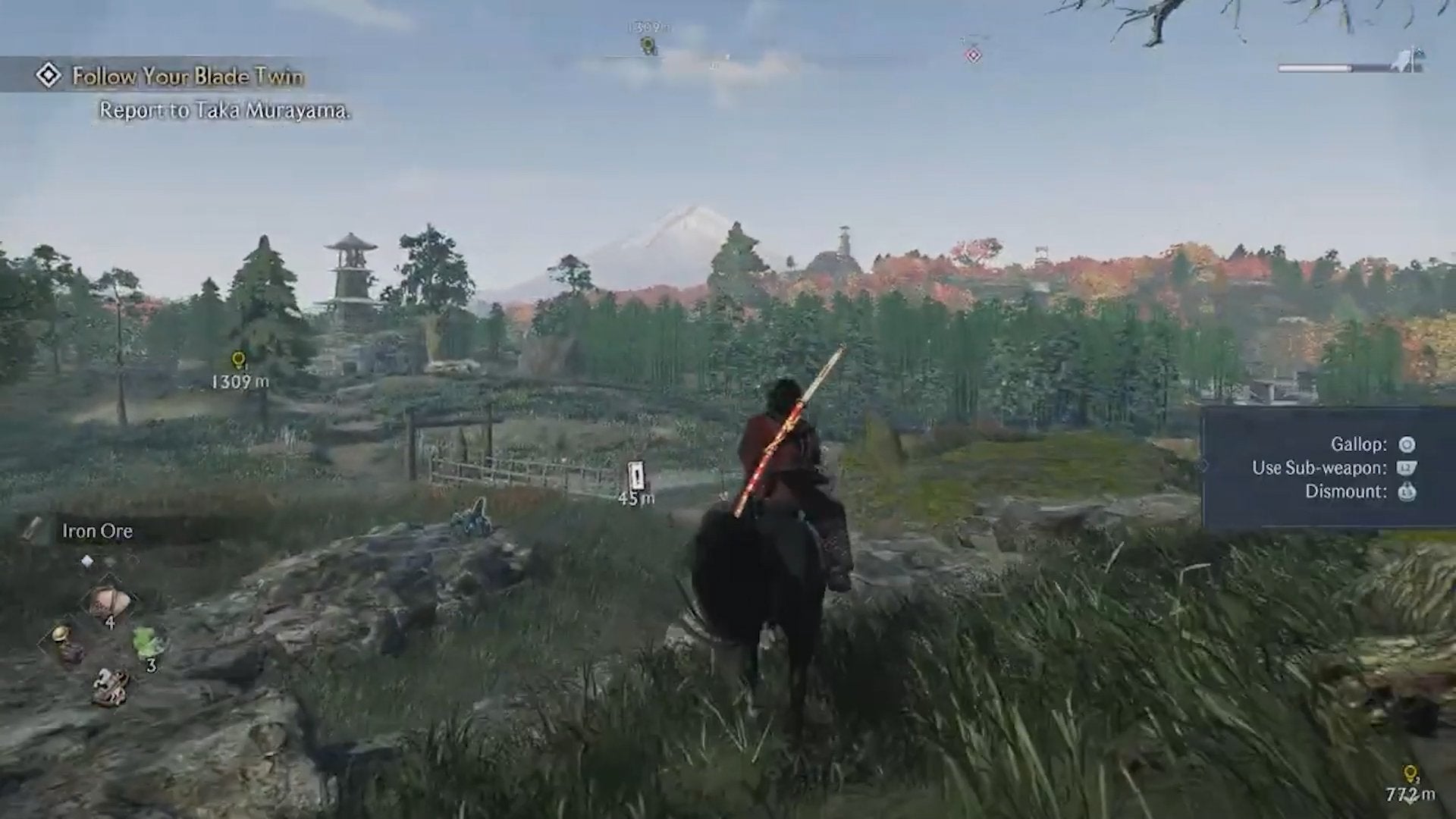
Running around the coast and riding your horse through forests is a pleasant experience. Japan is a beautiful country with tons of gorgeous natural landmarks. It’s pretty hard to screw up such a setting, so that’s more of a compliment to Japan than to Rise of the Ronin in our review.
The game is set in the 1800s, firmly planting the plot during Japan’s industrialization era. The effect of Western culture is an important theme in Rise of the Ronin that’s explored satisfyingly. Hooray for guns!
Although we wish that these elements were used in the storyline better, we appreciate that they are at least present. There’s an impact on the gameplay in terms of meeting characters who work to develop various useful technologies—cameras, gliders, etc. Overall, this game feels like it’s where and when it claims.
Despite this, the environment still feels empty. This is unfortunately a negative trait among many open world games. Very few of them can do an open world justice—like Skyrim and Elden Ring. We try to enjoy the peaceful waltz through the wilds, but we can see how that could be boring to many gamers.
Multiplayer: Meh, What Did You Expect?
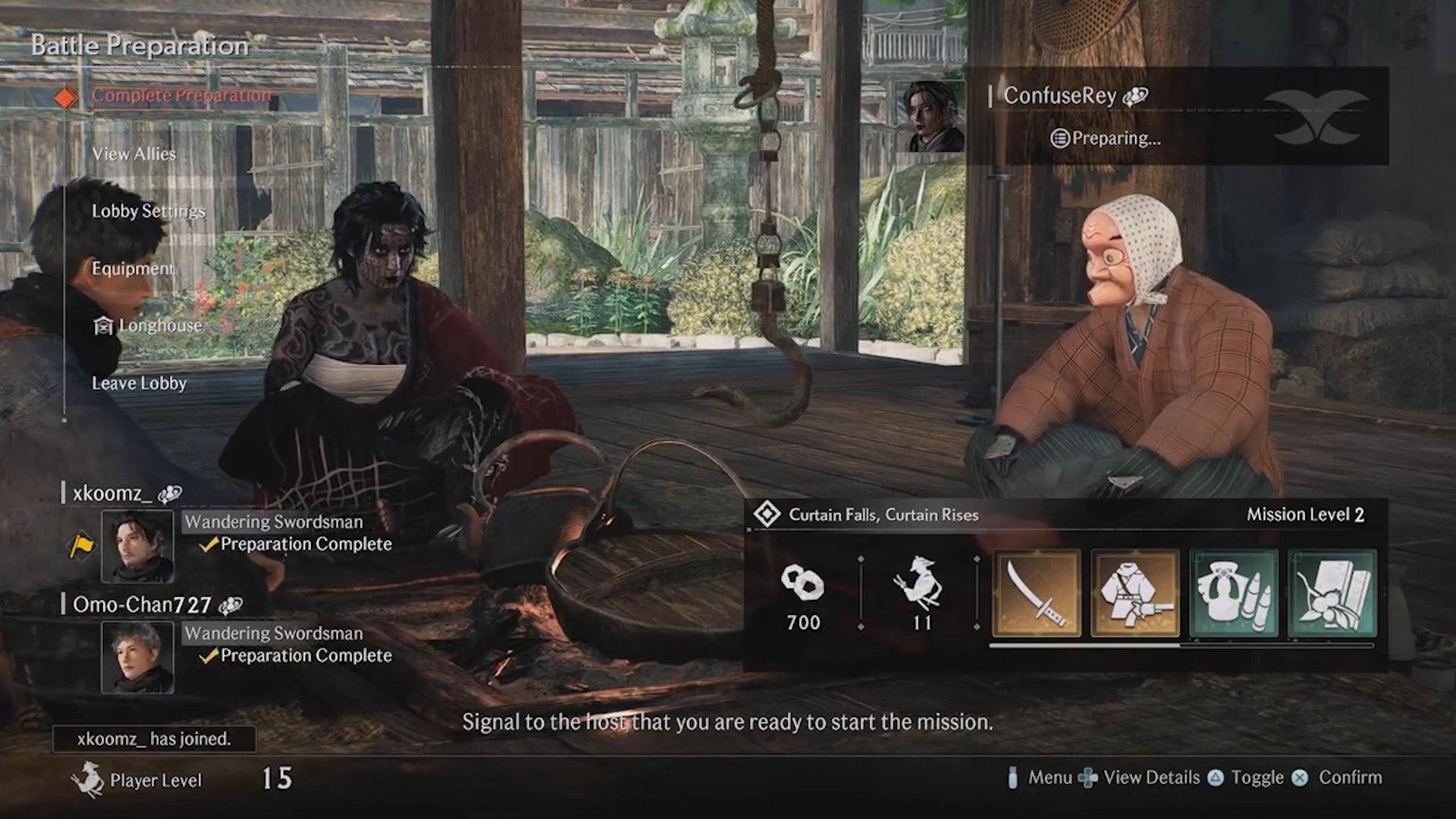
Rise of the Ronin uses the same formula for cooperative multiplayer as found in Nioh and Nioh 2. You enter another player’s world and help them complete a mission. That’s it. Also, there doesn’t seem to be any PvP.
The rewards you get for doing so aren’t the best either. The most useful loot you’ll gain from multiplayer lets you transfer effects between weapons and armor—but you can get those through singleplayer gameplay that doesn’t make you wait for other gamers.
With that said, matchmaking is quick and there’s no lag or glitching. As far as the technical aspects go, the multiplayer is implemented very well and plays as it should. There are gestures as well so that you can quickly and efficiently communicate with others. It must be said that the matchmaking time will increase later as fewer and fewer people play the game. While sad, we predict this inevitability in the coming weeks as people realize how lackluster Rise of the Ronin is in most regards—especially after more reviews are published.
Customization: “Wow, They Actually Let Me Do That!”
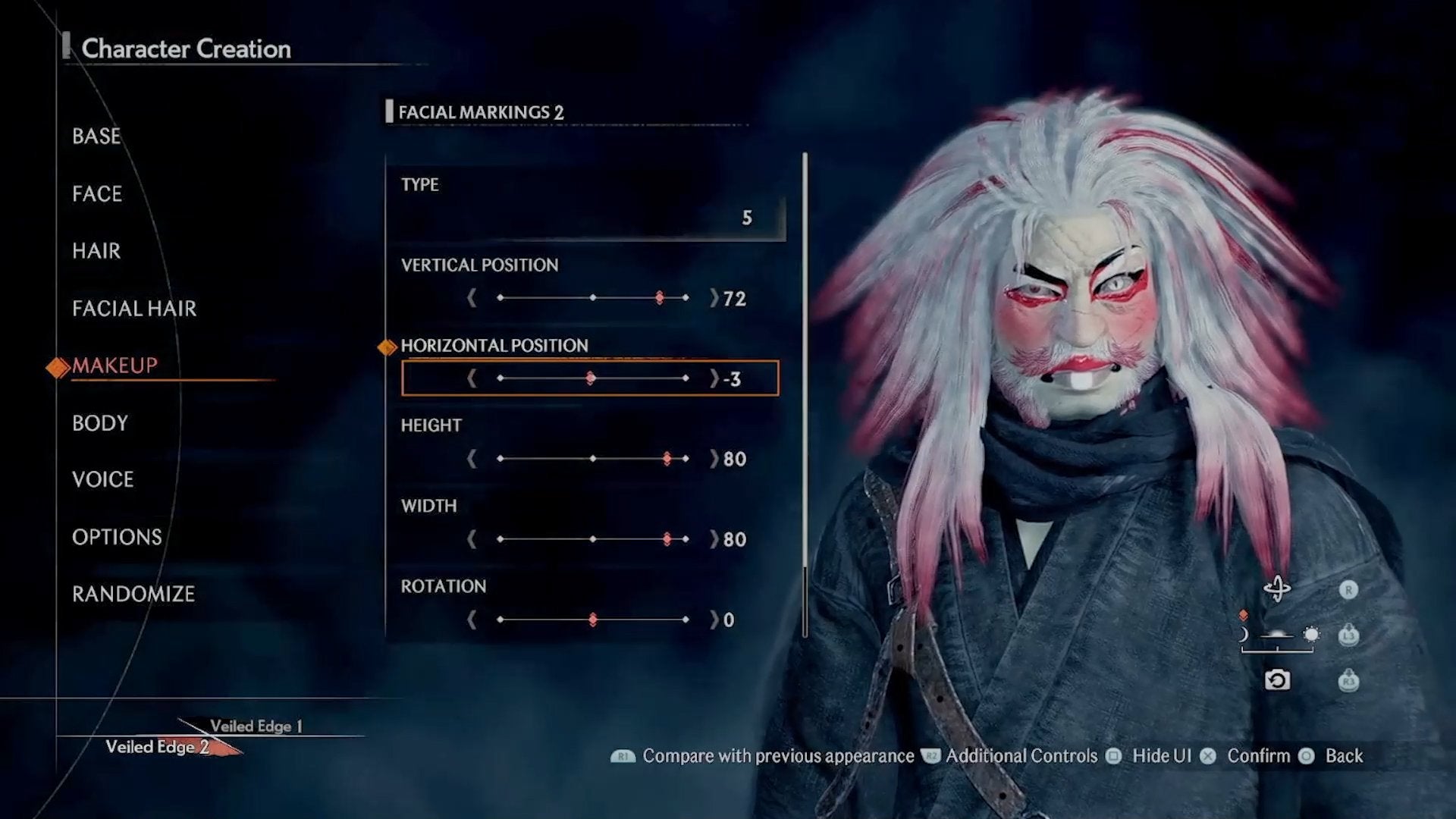
If you’re a fan of creating inhuman abominations at character creation screens, you’ll love this part of Rise of the Ronin. In our usual test of such features, we pushed all the sliders to the right of most appearance settings and we essentially created an extremely inquisitive tengu that recently got a wicked perm.
Do you want to make your character into a bobblehead figurine? Use the head-size slider! Do you hate facial symmetry? Then unselected it for the most lopsided visage possible! Do you want your hair to have colored tips, highlights, and colored tips for your highlights? Let your hair salon dreams run wild!
Then there’s the weapon and armor customization. You’re allowed to change the appearance of pretty much anything without compromising its effects and stats. There’s a screen in the hub area where you can choose different weapon or armor skins for anything you want.
What’s more, you can transfer most effects (excluding set bonuses) between items. There’s even a mechanic to upgrade your favorite equipment—although it’s massively overpriced in some cases.
You can even ask blacksmiths (and some other NPCs) to craft weapons and armor to get one with randomized effects. This feels similar to Nioh and Nioh 2‘s weapon and armor mechanics—albeit not as in-depth. Upon review, Rise of the Ronin does a decent job with customization.
Conclusion: Wait for It to Go on Sale Before Buying
Despite all the criticism we have about Rise of the Ronin, it’s not a bad game by any means. If there were just a few more features in the combat and world events, we feel that the gameplay would have been better.
The characters and storyline needed more to be engaging and are definitely the lowest points of the game. Although we spent 15 hours in this world so far, we can’t remember any characters or why they are important to the protagonist outside of giving items and upgrades.
As for technical aspects: many games should use Rise of the Ronin as an example to follow. There are virtually no issues on launch, which, sadly, is a rarity these days. You’re not going to fall through the world thanks to a lack of floor meshing or get launched into the heavens when colliding with a small shrub.
We’re absolutely going to keep playing Rise of the Ronin after our review, as it’s fun. At the end of the day, that’s what a video game needs to be above all else. However, the full price is too much for what’s a 7~/10 game at best. Wait until it goes on sale for at least 30% off before you pick up Rise of the Ronin.


